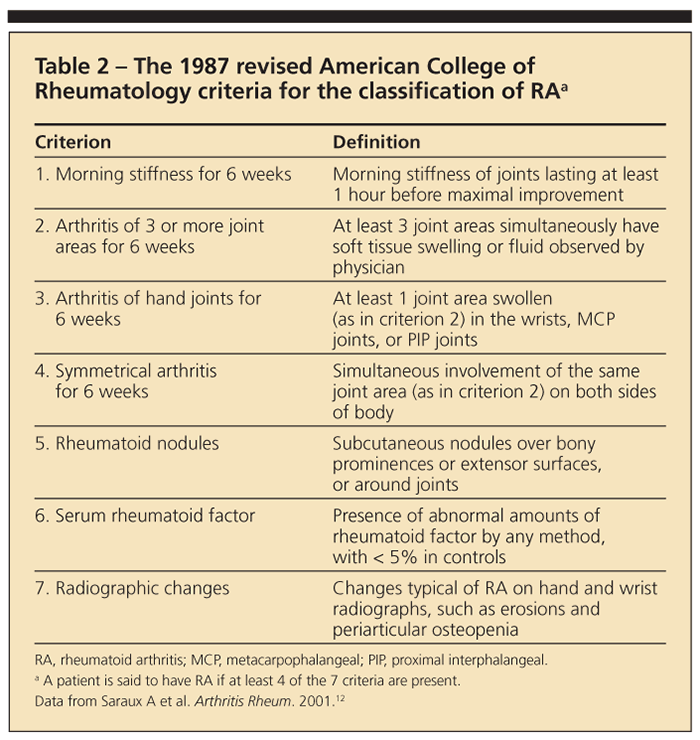


Women, smokers, and those with a family history of the disease are most often affected. This measure is currently stewarded by the AMA-PCPI and used in the Physician Quality Reporting System.Rheumatoid arthritis is the most commonly diagnosed systemic inflammatory arthritis, with a lifetime prevalence of up to 1% worldwide. Note: The proposed health plan measure is adapted from an existing provider-level measure for the general population (Preventive Care & Screening: Tobacco Use: Screening & Cessation Intervention NQF #0028). Rate 2: The percentage of adults 18 years and older with a diagnosis of alcohol or other drug dependence who received a screening for tobacco use and follow-up for those identified as a current tobacco user. Rate 1: The percentage of patients 18 years and older with a diagnosis of serious mental illness who received a screening for tobacco use and follow-up for those identified as a current tobacco user. The percentage of patients 18 years and older with a serious mental illness or alcohol or other drug dependence who received a screening for tobacco use and follow-up for those identified as a current tobacco user.

Tobacco Use Screening and Follow-up for People with Serious Mental Illness or Alcohol or Other Drug Dependence These measures are intended to be used as part of a set of 4 linked measures addressing Substance Use (SUB-1 Alcohol Use Screening SUB-2 Alcohol Use Brief Intervention Provided or Offered SUB-3 Alcohol and Other Drug Use Disorder Treatment Provided or Offered at Discharge SUB-4 Alcohol and Drug Use: Assessing Status after Discharge ). The Alcohol and Other Drug Disorder Treatment at Discharge (SUB-3a) rate describes only those who receive a prescription for FDA-approved medications for alcohol or drug use disorder OR a referral for addictions treatment. The Provided or Offered rate (SUB-3) describes patients who are identified with alcohol or drug use disorder who receive or refuse at discharge a prescription for FDA-approved medications for alcohol or drug use disorder, OR who receive or refuse a referral for addictions treatment. The measure is reported as an overall rate which includes all hospitalized patients 18 years of age and older to whom alcohol or drug use disorder treatment was provided, or offered and refused, at the time of hospital discharge, and a second rate, a subset of the first, which includes only those patients who received alcohol or drug use disorder treatment at discharge. SUB-3a Alcohol & Other Drug Use Disorder Treatment Provided or Offered at Discharge and SUB-3a Alcohol & Other Drug Use Disorder SAAR values that are outliers are intended to prompt analysis of possible overuse, underuse, or inappropriate use of antimicrobials, subsequent actions aimed at improving the quality of antimicrobial prescribing, and impact evaluations of ASP interventions. The SAARs are designed to serve as high value targets or high level indicators for antimicrobial stewardship programs (ASPs). The measure is comprised of a discrete set of ratios, Standardized Antimicrobial Administration Ratios (SAARs), each of which summarizes observed-to-predicted antibacterial use for one of 16 antibacterial agent-patient care location combinations. The measure compares antimicrobial use that the hospitals report with antimicrobial use that is predicted on the basis of nationally aggregated data. The antimicrobial use data that are in scope for this measure are antibacterial agents administered to adult and pediatric patients in a specified set of ward and intensive care unit locations: medical, medical/surgical, and surgical wards and units. This measure assesses antimicrobial use in hospitals based on medication administration data that hospitals collect electronically at the point of care and report via electronic file submissions to CDC’s National Healthcare Safety Network (NHSN). National Healthcare Safety Network Antimicrobial Use Measure


 0 kommentar(er)
0 kommentar(er)
